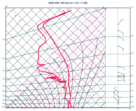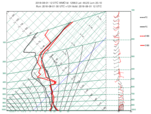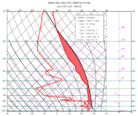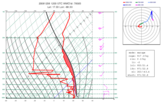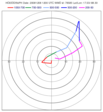stations
Allows to specify a geographical location which may coincide with a meteorological (WMO) station. It is also equipped with a search facility applicable to the ECMWF’s station database. If the location is a meteorological station, you can search the database of stations by name, ident, wmo_block, position or area.
Note
This function performs the same task as the Stations icon in Metview’s user interface. It accepts its parameters as keyword arguments, described below.
- stations(**kwargs)
Defines a geographical location which may coincide with a meteorological (WMO) station.
- Parameters
search_stations_database ({"wmo", "no"}, default: "wmo") – Selects the type of station location to be entered. When the value is “wmo” a station can be chosen from Metview’s built-in WMO station database. If the value is “no” you can set an arbitrary location.
search_key ({"name", "ident", "wmo_block", "position", "area"}, default: "name") – Specifies which parameter should be used in the search of the WMO stations database. Only available when
search_stations_databaseis “wmo”.name (str or list[str], default: "heathrow") – Specifies the location name. If
search_stations_databaseis set to “no” you are dealing with an arbitrary location and you may enter any name of your choice. Ifsearch_stations_databaseis set to “wmo” this should be the name of the required station. You need the exact name of the station so you should be careful with the spelling which is in accordance with WMO. This tries to match the original language spelling, e.g. you need to use “Kobenhavn” instead of “Copenhagen”.position (list, default: [51.38, -0.78]) – Specifies the exact geographical coordinates (as [lat, lon]) of the location of interest. If
search_stations_databaseis set to “no” you specify the coordinates of an arbitrary location, while if it is set to “wmo” you specify the location of a meteorological station. It may happen that you do not know the exact coordinates of the station. In this case, you can specify a geographical tolerance inthreshold.height (number, default: 0) – Specifies the height of the station. If
search_stations_databaseis set to “no” you can specify theheighthere, otherwise the station’s height is retrieved automatically from the database.threshold (number, default: 0.1) – Specifies a geographical tolerance in degrees for the coordinates of a meteorological station specified in
position. This is only available whensearch_stations_databaseis “wmo” andsearch_keyis “position”.ident (number, default: 3772) – Specifies the station’s WMO numerical identifier which is a 5 digit number. Only available if
search_stations_databaseis “wmo” andsearch_keyis “ident”.wmo_block (number, default: 3) – Specifies the station’s WMO block which is a 2 digit number corresponding to a geographical area. Only available if
search_stations_databaseis “wmo” andsearch_keyis “wmo_block”.area (list, default: [52, -1, 51, 0]) – Specifies the coordinates of an area (as [north, west, south, east]) where meteorological stations of interest are located. Only available if
search_stations_databaseis “wmo” andsearch_keyis “area”.fail_on_error ({"yes", "no"}, default: "yes") –
- Return type
Request

